

Also, the production of attractive
and well crafted functional
objects. Subcategories of
the design arts include: architecture,
bonsai, fashion design, furniture design, graphic
design, ikebana, industrial
design, interior design, landscape
architecture, stagecraft, textile
design, and Web page design.
Examples of objects which were designed:

Korea, Openwork
Incense Burner, first half of the 12th century, celadon
glazed porcelain, height
15.3 cm, National Museum of Korea. While fulfilling its function,
the design of this incense burner juxtaposes
plant and animal motifs
with geometric openwork.
See Korean art.

Kaspar Faber (German, 1730-1784), manufactured by Faber-Castell, Germany, Lead Pencil, 1761, graphite and cedar wood. See pencil.


Walter Hunt (American, 1795-1859), manufactured by A. Meyers & Sons Corp., USA, Safety Pin, 1849, steel. These illustrations are from Hunt's patent application.
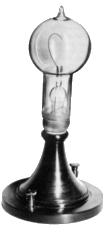
Thomas Alva Edison (American, 1847-1931), manufactured by Edison General Electric (now GE Lighting), USA, Incandescent Light Bulb, 1879, glass vacuum bulb, tungsten filament, and aluminum base.
Carlo Bugatti (Italian, 1856-1940), Bugatti Table, wood (mahogany?), cast and gilded metal mounts, inlays of ivory or bone, metal, and mother-of-pearl, height 71.1 cm, c. 1910, Tea and Coffee Service: Carlo Bugatti designer, executed by A.A. Hebrard, silver and ivory, c. 1907, Cleveland Museum of Art.
![]()
Hyman Lipman (American), manufactured by Faber-Castell, Germany, Wooden Pencil with Eraser, 1858, graphite, cedar wood, rubber, and metal ferrule. See pencil.

Peter Behrens (German, 1869-1940), designer,
manufacturer: Allgemeine Elektricitæts Gesellschaft (A.E.G.),
Germany, Fan Model No. GB 1, 1908, painted cast iron and brass,
11 1/2 x 10 3/4 x 6 inches (29.2 x 27.3 x 15.3 cm), Museum of
Modern Art, NY.
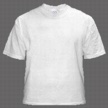
American, manufactured by Fruit of the Loom, USA, White T-Shirt, 1910s, cotton.

Eliel Saarinen (American, born Finland, 1873-1950),
designer, Manufacturer International Silver Company, Wilcox Silver
Plate Company Division (Meridan, Connecticut), Prototype Tea Service, c. 1933-35, electroplated nickel
silver, brass, and Bakelite; Tea
Urn, 1a-c: 14 1/2 x 7 3/4 inches (36.8 x 19.7 cm) Tray, 2: diameter 17 1/2 inches (44.5
cm) Creamer, 3: 3 x 6 x 3 7/8 inches (7.6 x 15.2 x 9.8 cm) Sugar
Bowl, 4a,b: 6 3/4 x 6 x 3 7/8 inches (17.1 x 15.2 x 9.8 cm) Large
Tray, 5: diameter 20 1/4
inches (51.4 cm), Metropolitan Museum of Art, NY. See prototype.

Sven Wingquist (Swedish, 1876-1953), designer,
manufacturer: SKF Industries, Inc., USA, Self-Aligning Ball Bearing, 1929, chrome-plated
steel, 1 3/4
x 8 1/2 inches (4.4 x 21.6 cm) diameter,
Museum of Modern Art, NY. MOMA's site says, "Good design
was considered by modernists as essential to the elevation of
society, and in 1934, this ball bearing was among the first works
to enter The Museum of Modern Art's design collection."
See circle and technology.
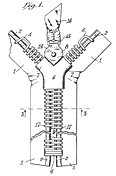
Otto F. G. Sundback (Canadian, born Sweden, 1880-1954), Zipper, 1913, brass and fabric. This is an illustration from Sundback's 1914 patent application for a "separable fastener" that Sundback also called a "hookless hooker."
Richard G. Drew (American, 1886-1956), manufactured by 3M Company, USA, Scotch Tape, 1930, transparent cellophane adhesive tape.

Ludwig Mies van der Rohe (German-American,
1886-1969), designer, "MR" Armchair, 1927, chrome-plated steel and painted
caning, 31 1/2 x 22 x
37 inches (80 x 55.9 x 94 cm), Metropolitan Museum of Art, NY.
This was developed from a 1924 design for a cantilevered
chair by Mart Stam. It was introduced by Mies van der Rohe at
the 1927 Stuttgart exhibition and has remained in production
ever since. Mies van der Rohe was the last director of the Bauhaus design school
in Dessau, from 1930 until its closing in 1932.
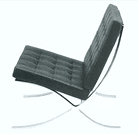
Ludwig Mies van der Rohe, Barcelona Chair,
1929, chrome-plated
steel and black
leather.

Eva Zeisel (American, born Hungary, 1906-),
designer; Schramberg Majolica Factory (Schramberg, Germany),
manufacturer, Inkwell, 1929-30, glazed
earthenware,
3 3/8 x 9 x 9 3/8 inches (8.6 x 22.9 x 23.8 cm), Metropolitan
Museum of Art, NY.

Ferdinand Porsche (German, 1875-1952), manufactured by Volkswagenwerk AG, Wolfsburg, Germany, Volkswagen Type 1 Sedan, 1938, steel, etc., 59 inches x 60 1/2 inches x 13 feet 4 inches (149.9 x 153.7 x 406.4 cm), Museum of Modern Art, NY. The design was originally produced to satisfy the interest of Germany's Nazi government to manufacture a "people's car" affordable to everyone. This design became popular for several decades as the VW Beetle.

Charles Eames (American, 1907-1978), manufactured by Evans Products Co., Molded Plywood Division, Venice, CA, Leg Splint, 1942, molded plywood, 4 1/8 x 7 3/4 x 42 inches (10.5 x 19.7 x 106.7 cm), Museum of Modern Art, NY.

Charles Eames, manufactured by Evans Products Co., Molded Plywood Division, Venice, CA, Three-Legged Side Chair, c. 1944, stained molded plywood, lacquered metal rod, rubber shockmounts, and rubber glides, 30 x 19 x 22 1/2 inches (76.2 x 48.3 x 57.2 cm), Museum of Modern Art, NY. The back and seat pieces
were shaped to the contours of the human body.

Godtfred Kirk Christiansen (Danish, 1920-1995), manufactured by LEGO Group, Billund, Denmark, LEGO Building Bricks, 1954-58, ABS plastic, .1: 7/16 x 1 1/4 x 5/8 inches (1.1 x 3.2 x 1.6 cm) .2: 7/16 x 15/16 x 5/8 inches (1.1 x 2.4 x 1.6 cm) .3: 7/16 x 5/8 x 5/8 inches (1.1 x 1.6 x 1.6 cm).

Ernest C. Higgins (American), manufactured by Ernest C. Higgins Co. (Allan Follet), Norwood, MA, Goalie Mask, 1964, fiberglass, 10 1/2 x 7 3/4 x 5 3/16 inches (26.7 x 19.7 x 13.2 cm), Museum of Modern Art, NY.
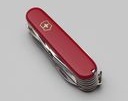
![]()
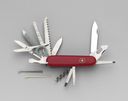
Carl Elsener (Swiss, 1860-1918), manufactured by Victorinox, Ibach, Switzerland, Victorinox Swiss Officers' Knife Champion (no. 5012), 1968, plastic and stainless steel, 3 5/8 x 1 x 1 1/8 inches (9.2 x 2.5 x 2.9 cm), Museum of Modern Art, NY.
S. C. Johnson & Son, Inc., USA (established 1886), Ziploc Bag, 1972, polyethylene plastic.

Frank O. Gehry (American, born Canada, 1929-), designer, Easy Edges, c. 1972, side chair, corrugated cardboard, 33
x 14 1/2 x 23 inches, Minneapolis Institute of Arts. See architect.
Art Fry (American, 1931-) and Spencer Silver (American, 1941-), manufactured by 3M, USA, Post-it Note, c. 1977, paper and adhesive.

Bob Hall (American, contemporary), manufactured by Hall's Wheels, Cambridge, MA, Racing Wheelchair, 1986, aircraft steel tubing, cotton, and nylon, 23 5/8 x 25 x 45 inches (60 x 63.5 x 114.3 cm).

Michael Graves (American, 1934-), manufactured by Alessi, Salt Shaker and Pepper
Mill, 1988.

Synthetic Industries, company design and manufacture, Chattanooga, TN, Pyramat Erosion Mat, 1992, polypropylene, 78 x 120 x 1/2 inches (198.1 x 304.8 x 1.3 cm), Museum of Modern Art, NY.
![]()
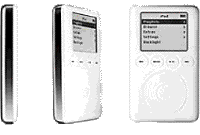
Apple Computer Inc., iPod, 2001, digital audio player, injected
molded ABS plastic, silicon, etc., 4.02 x 2.43 x 0.78 inches. The first iPod
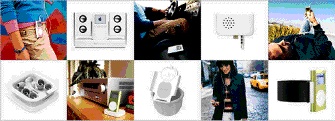 had a 5 GB storage capacity, enough for 10 hours of playing time. Later versions added storage capacity and other features. Apple Computer has led all other electronics companies in design elegance, power, and ease of use.
had a 5 GB storage capacity, enough for 10 hours of playing time. Later versions added storage capacity and other features. Apple Computer has led all other electronics companies in design elegance, power, and ease of use.
Also see art, art
careers, artist,
Arts and Crafts Movement,
ASTM International (American
Society for Testing and Materials), CAD,
choose, clip
art, counterpoint,
ergonomics, esquisse,
heraldry, Index
of American Design, interdisciplinary,
letterform, specifications,
and style.
https://inform.quest/_art
Copyright © 1996-![]()